Text and Photos by Henrylito D. Tacio
“A romantic little village” — that was how Sir Stamford Raffles described Bogor when he made it his country home during the British interregnum.
The Lonely Planet seems to agree. It writes: “As an oasis of unpredictable weather – it is credited with 322 thunderstorms a year – cool, quiet Bogor was the chosen retreat of colonials escaping the stifling, crowded capital.
“Today, the long arm of Jakarta reaches almost the whole way to Bogor, and while a ribbon of green still just about survives between the two, the city is already choked with the overspill of the capital’s perennial traffic problems.”
Yes, rapid economic development has turned the central part of Bogor into a congested mess. However, there are still rivers, canals, red-roofed houses, mosques, churches, trees, flowers, and views of nearby Mount Salak, an eroded volcanic range in West Java.
Why do I know all these? It’s because I had the opportunity of visiting Bogor a few years back. It is about 60 kilometers to the south of Jakarta. Although its transformation into a distant Jakartan suburb continues apace, the real oasis remains untouched. Bogor is one of the most beautiful cities I have visited in recent years.
A local told me that Bogor earned the sobriquet, “Kota Hujan,” for a reason. It simply means “City of Rain.” In my research, I found that Bogor receives 4000 millimeters of rain a year, with over 200 millimeters falling in any one month. So, I didn’t wonder why there was never a day without rain. But it did stop — when we left the city on our way back to Manila.
There were so many things I learned on the said trip. For one, I didn’t know that Bogor was once Indonesia’s capital — this was during the brief British occupation. It was called Buitenzorg, named after the summer capital of the Dutch in the hot, dry season.
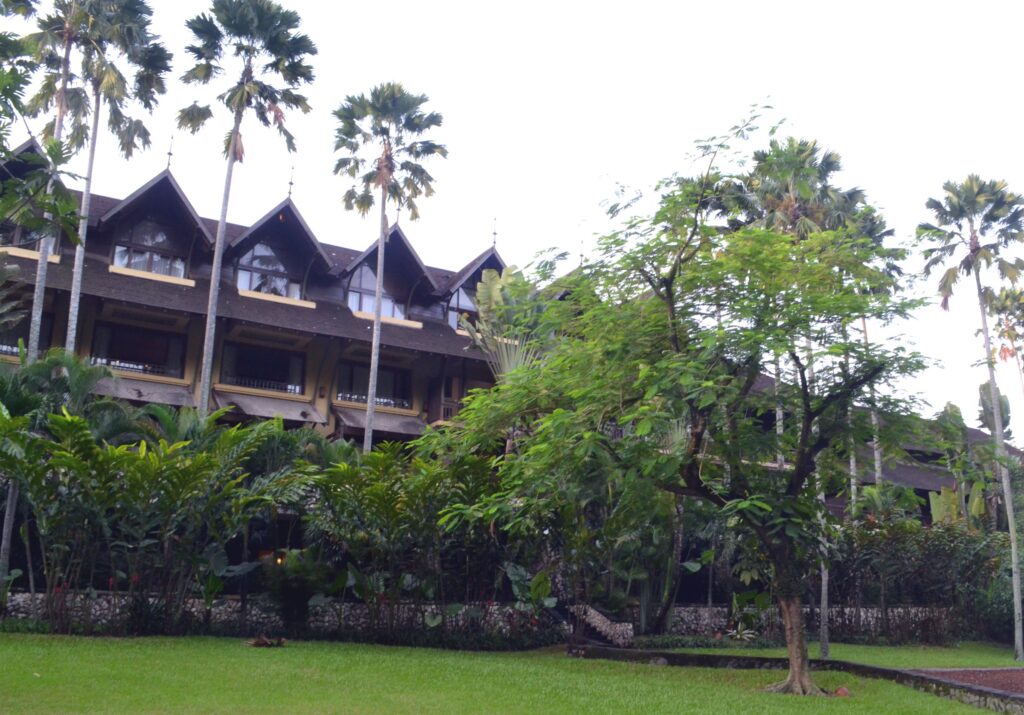
The hotel where I stayed 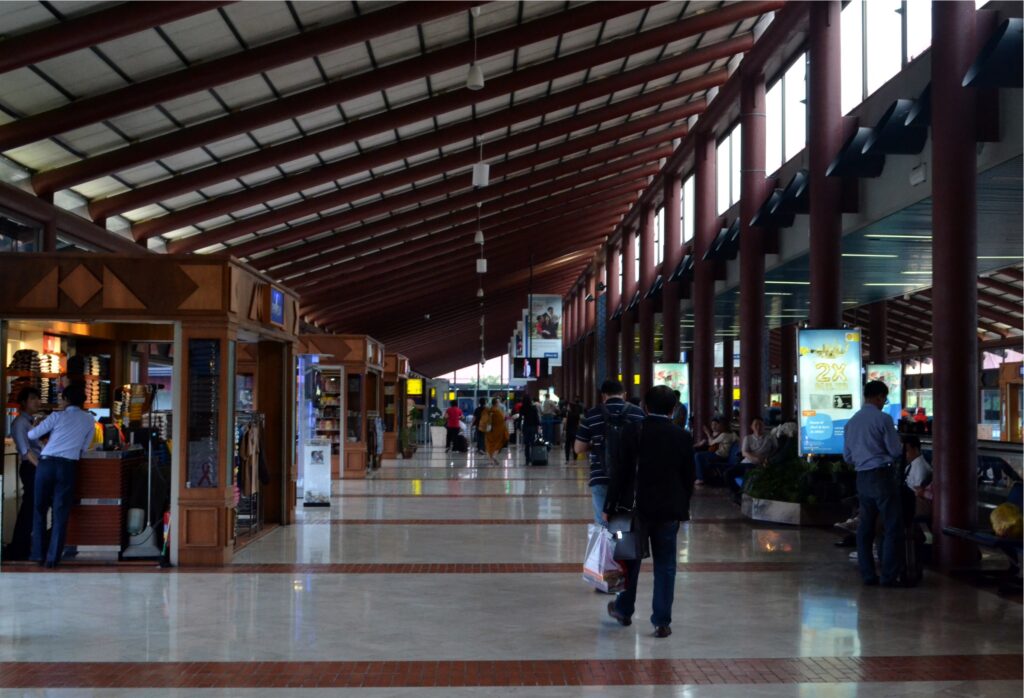
Inside Soekarno-Hatta Airport
As Bogor is located 290 meters above sea level, it is amazingly cooler than those areas in torrid lowlands. This is the reason why most of the Indonesian elite have their villas in the city. I have observed this during our travel as we approached the hotel where we were billeted.
Where I went, I find people in Bogor to be extremely friendly; in fact, some of them will go out of their way to help you. So if you are polite and smile often, you will go very far. Although English is not prevalent, basic English is spoken by many in restaurants and in the local warung food-stalls.
If you think the traffic in Jakarta is worse, then you better be prepared when you are in Bogor; the traffic is chaotic. There is a daily traffic jam in Bogor from early in the morning to late in the afternoon. On weekends and holidays, people from Jakarta often go to Bogor in their cars.
It was good that the hotel provided us a ride going to the heart of the city. The hotel is about 10 minutes away from the city, and getting a taxi is always a hassle. Generally, we went to go “where the action” not to shop (although some of us did!) but to eat. Although it was exhausting, we still liked it so we could try other foods other than those we ate at the hotel.
On our last night, all of us tried something new. I went for rice noodles with various vegetables and meat (you have to pay for all that you will pick and it will be cooked by the chef). The only person who ordered unusual was Zacarias Sarian, an editor of a national magazine and recipient of the Ramon Magsaysay Award. When I asked him if it tasted good, he replied: “Not bad.”
Bogor is known around the world for its Botanical Gardens, which stretch out over 87 hectares. One part looks like palace gardens as they are carefully manicured, and another part looks like a wild jungle at first glance (if not for the tags detailing where every tree and plant comes from). It has lakes, two rivers, and hilly trails.
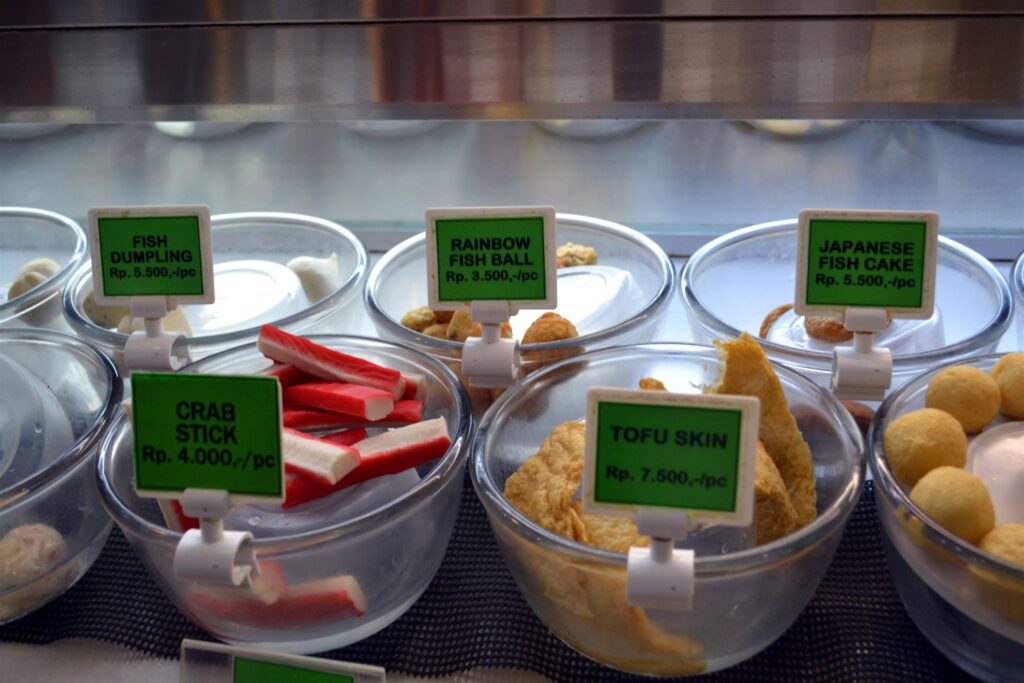
Pick what you want to eat 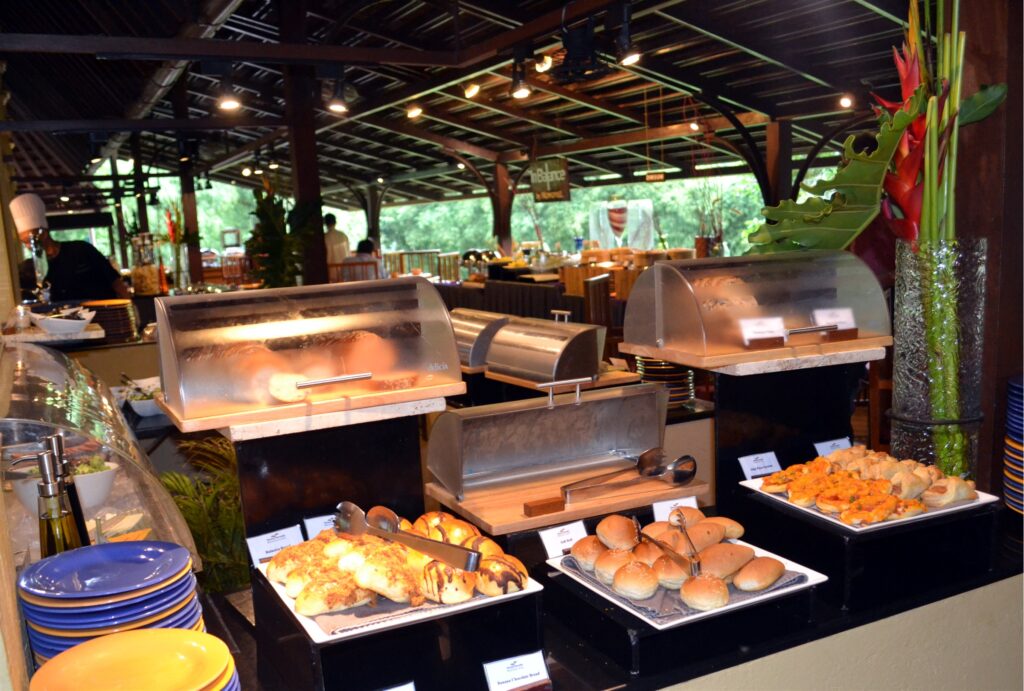
Verandah Restaurant 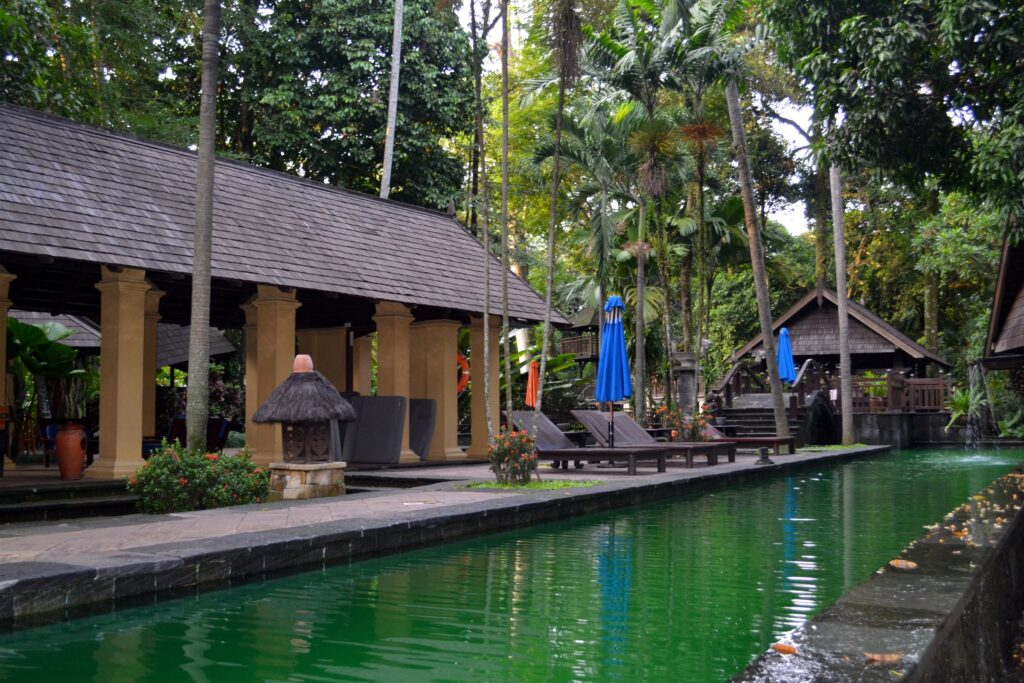
A place to relax
Unfortunately, I wasn’t able to see the Botanical Gardens firsthand. I only got the information from my friends and those I interviewed. I never had a chance to go out from the place where we were having our workshop.
But on second thought, we were billeted in a hotel that is set amongst breathtaking gardens. It features an 18-hole golf course. But the most important: food. You can choose from delicious Sundanese-Indonesian or Western cuisine at its Verandah Restaurant or indulge in Italian dishes at Capriccio.
I really wondered why the media workshop on biotechnology was held in Bogor. I only knew it after reading A Handbook for Newcomers to Bogor, which Jose Levelink edited. It said: “Bogor is a university town. Students from all over Indonesia attend IPB (Bogor Agricultural University) to study agriculture, veterinary science, animal husbandry, fisheries, forestry, engineering, or other universities.
“Bogor is also an important scientific research center with numerous institutes conducting studies in the fields of soils, crops, forestry, fisheries, animal science, agricultural economics, biology and others. These institutes have also attracted foreign aid projects, often in the form of technical experts working within the various institutes of the universities.”
You can get to Bogor through Jakarta’s Soekarno-Hatta Airport. I hated when we arrived since it rained and there was a total black-out. I stood inside the airport for almost 30 minutes, and with no air-con, it was totally hot.
But my bad feeling about the airport changed when we were flying out. It was very clean; the stores are scattered all over the place. In fact, beautiful orchids are everywhere. I really had fun taking photos.
Well, I never got to know all these had I not visited Bogor.

